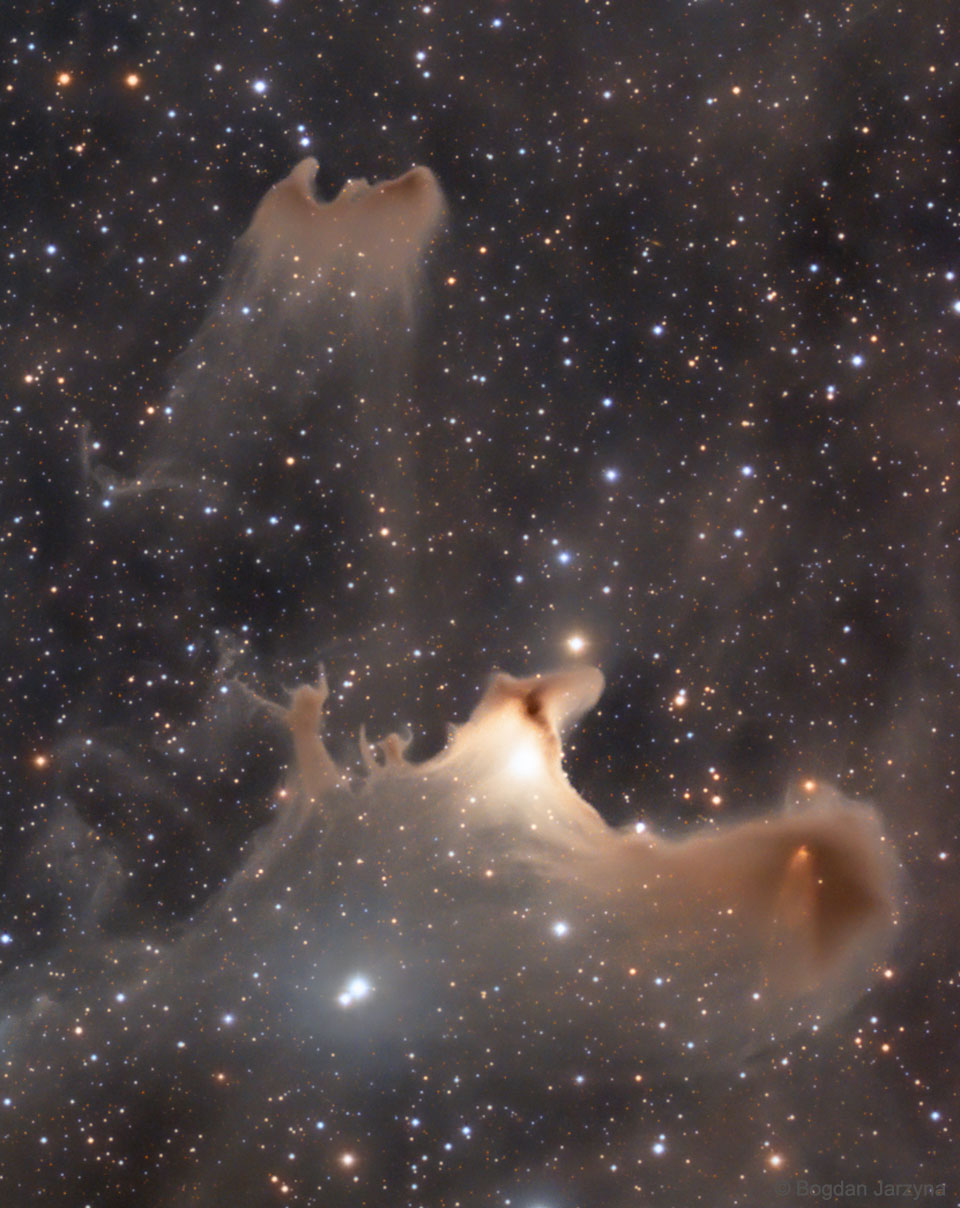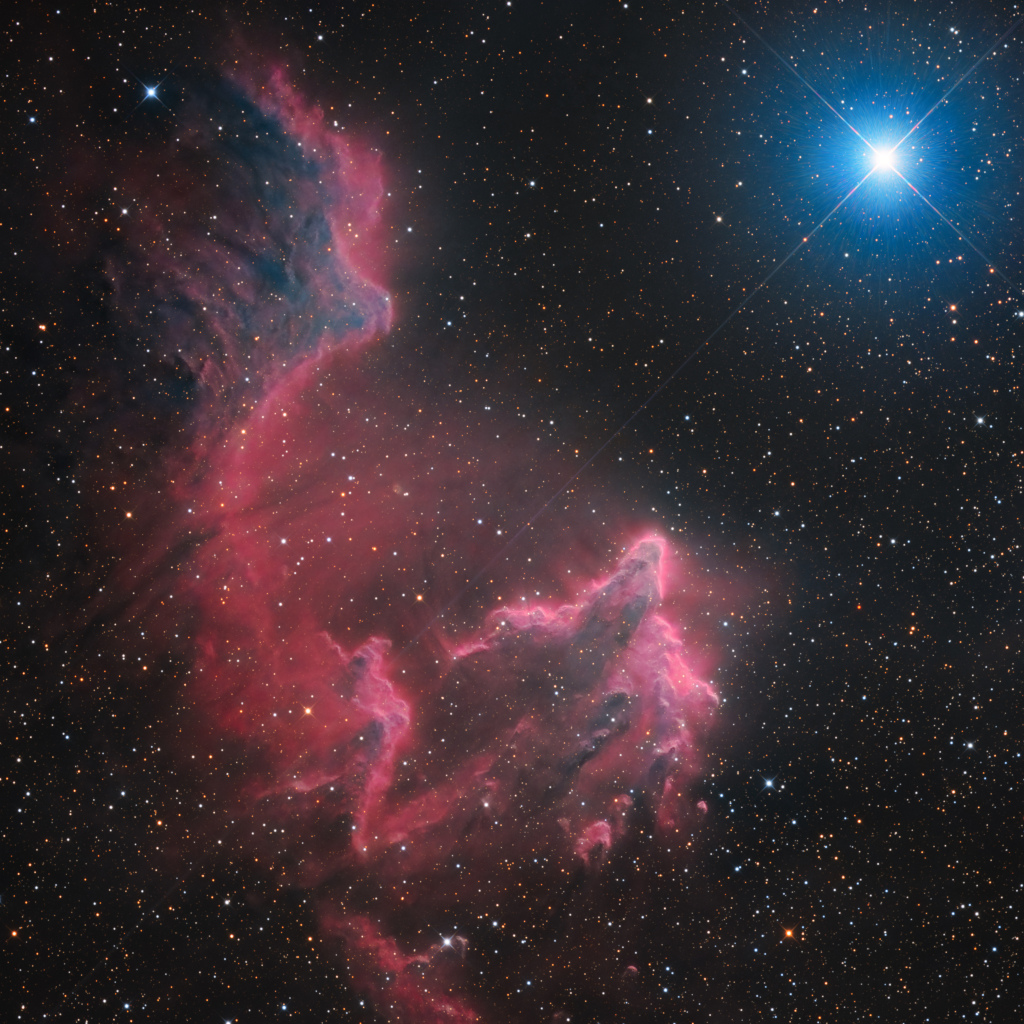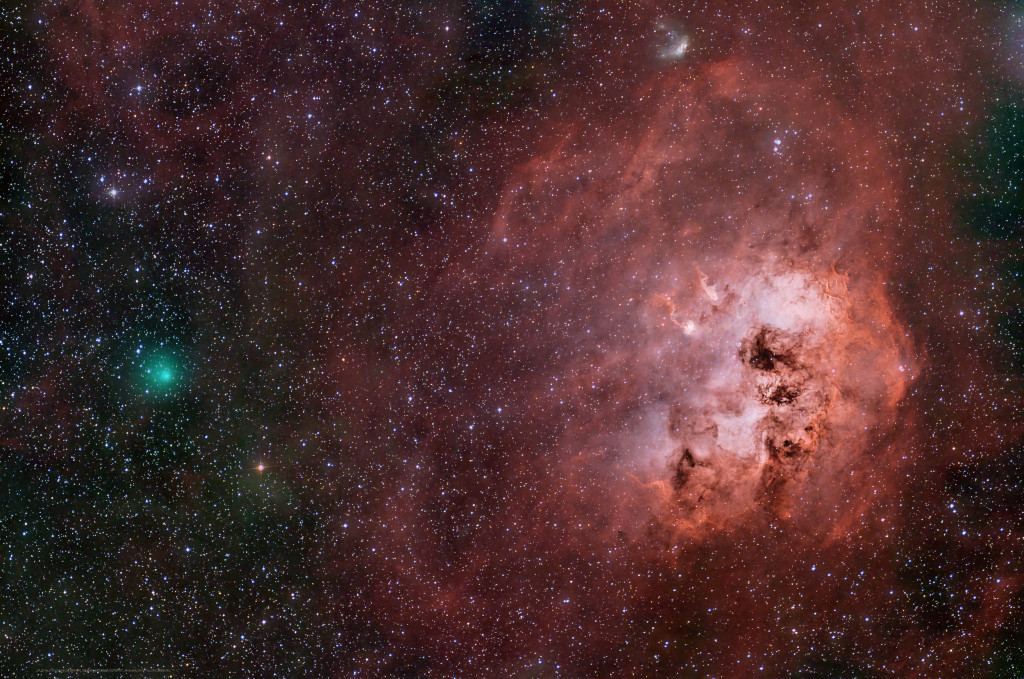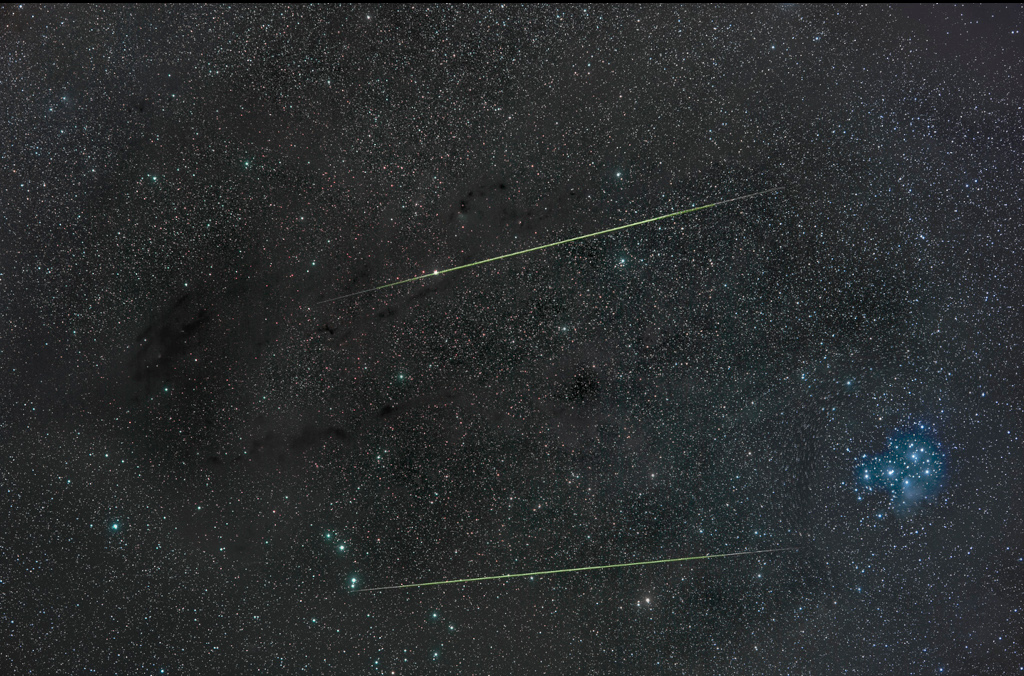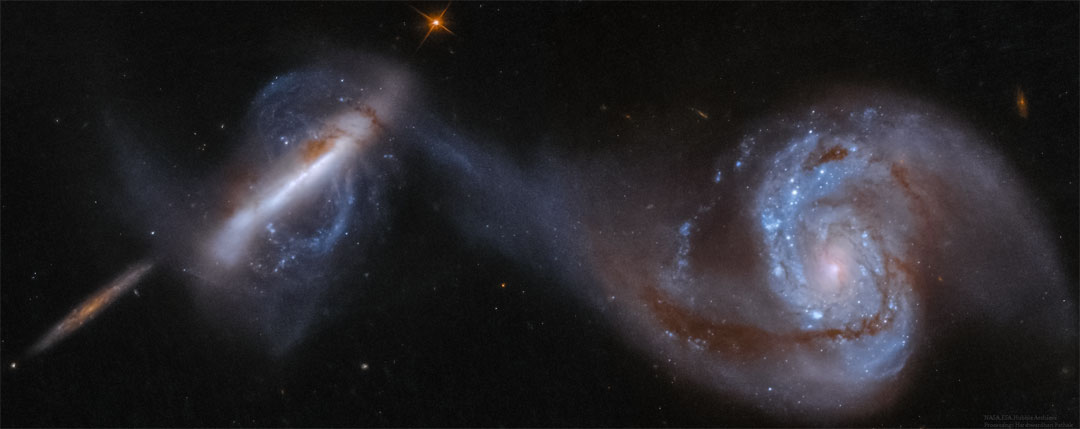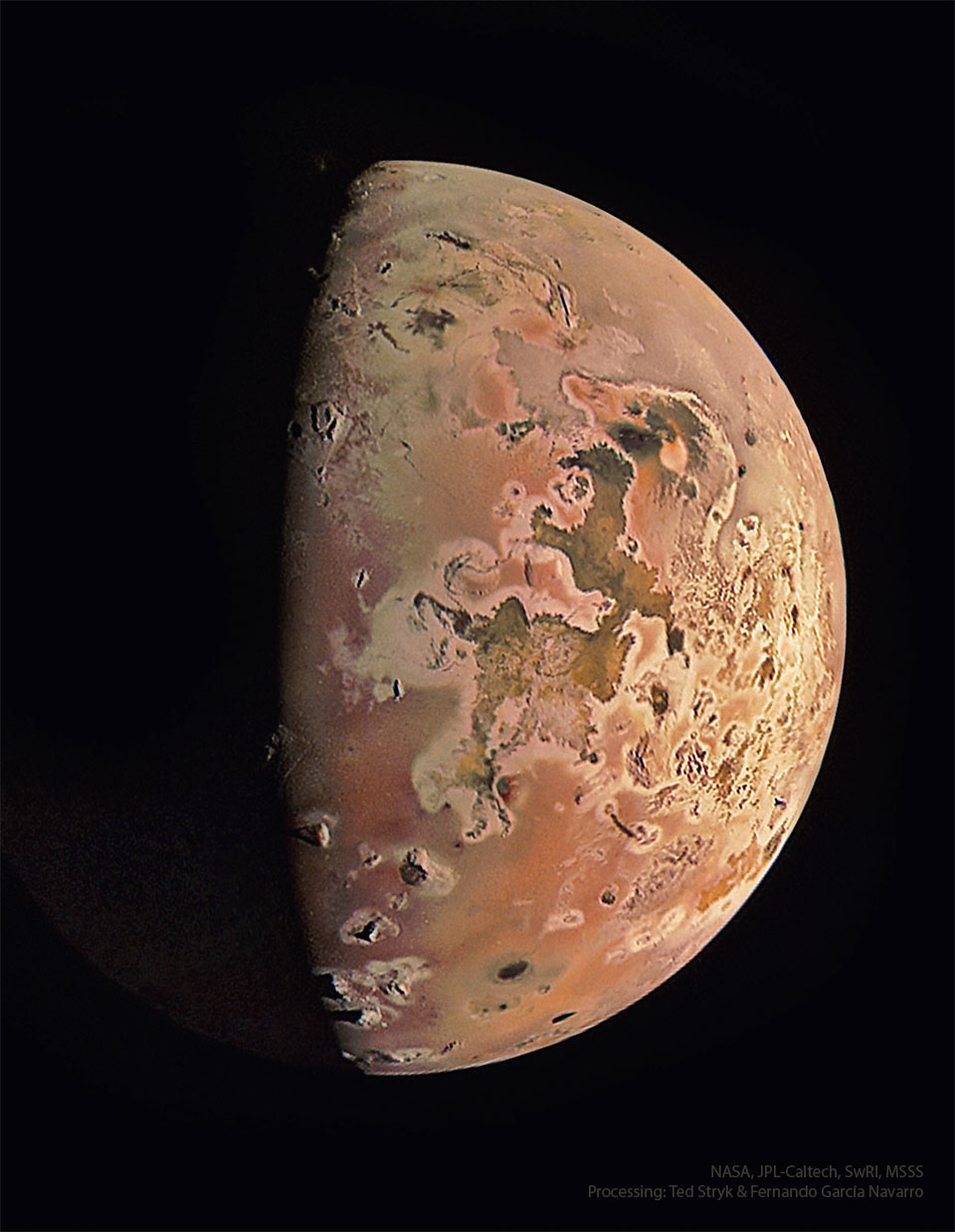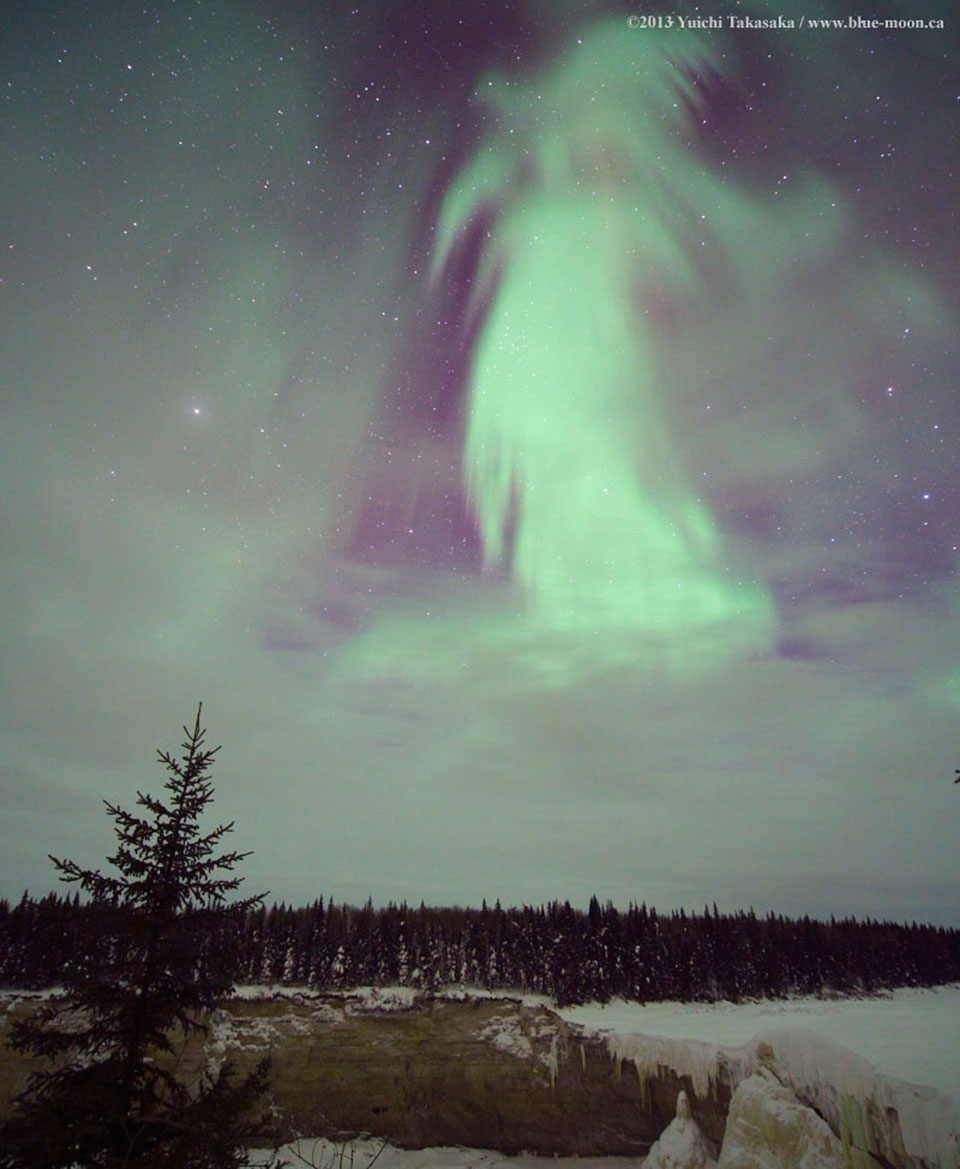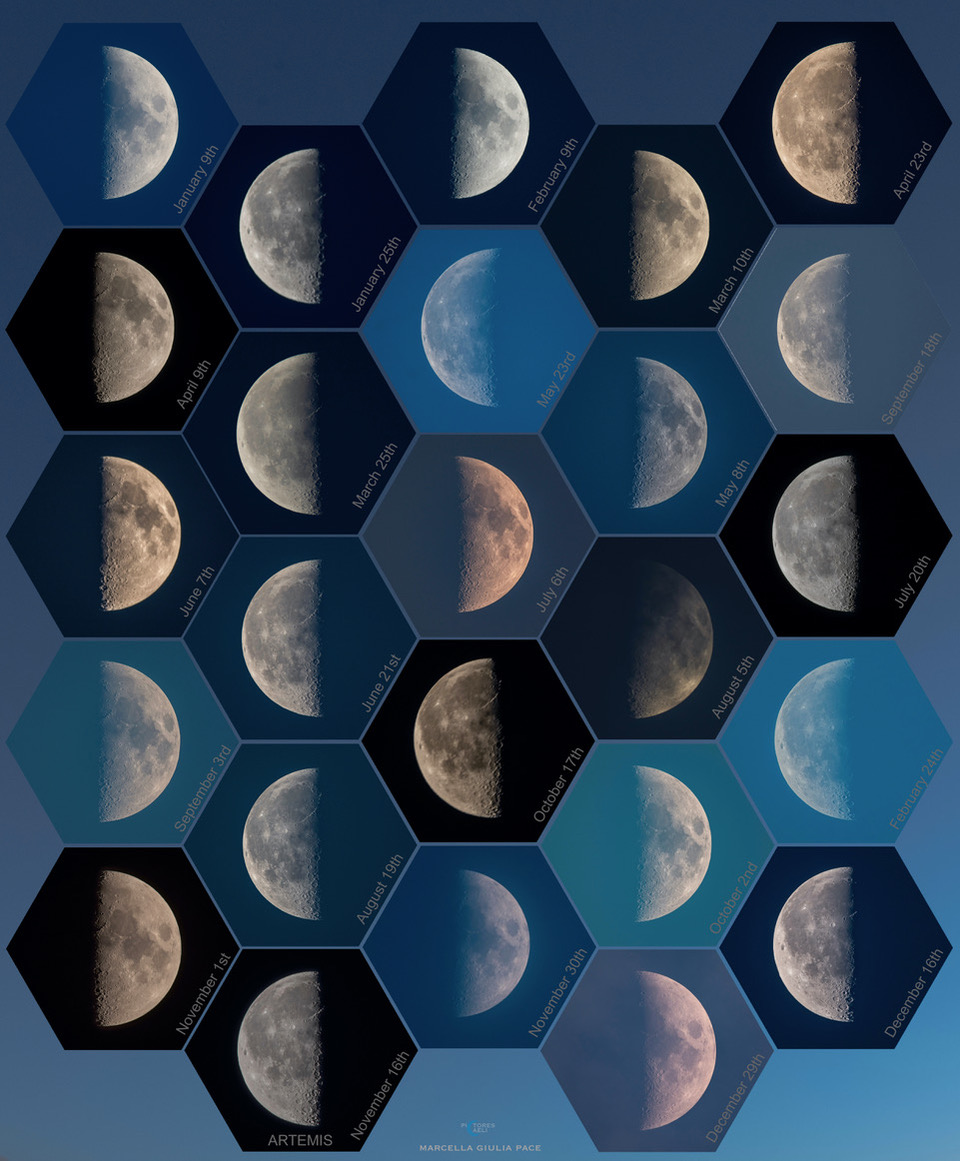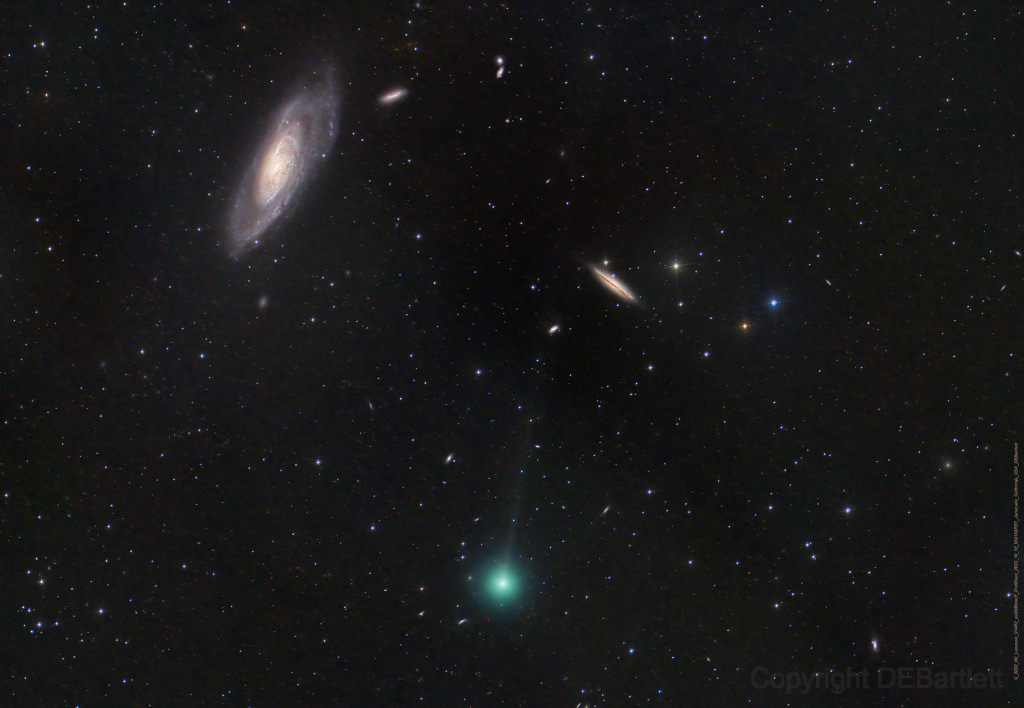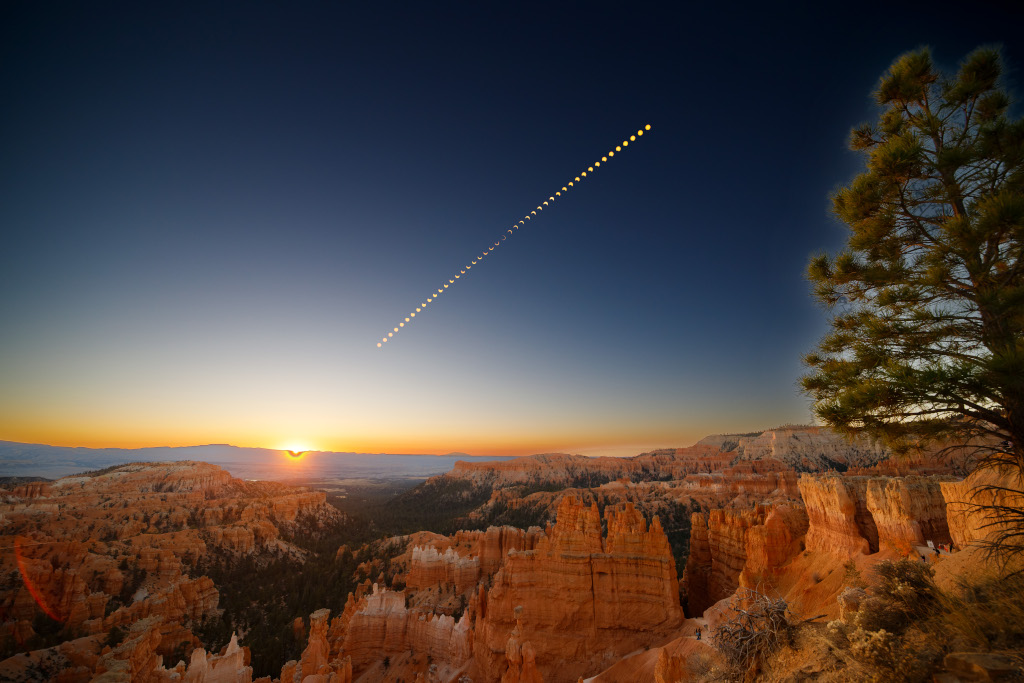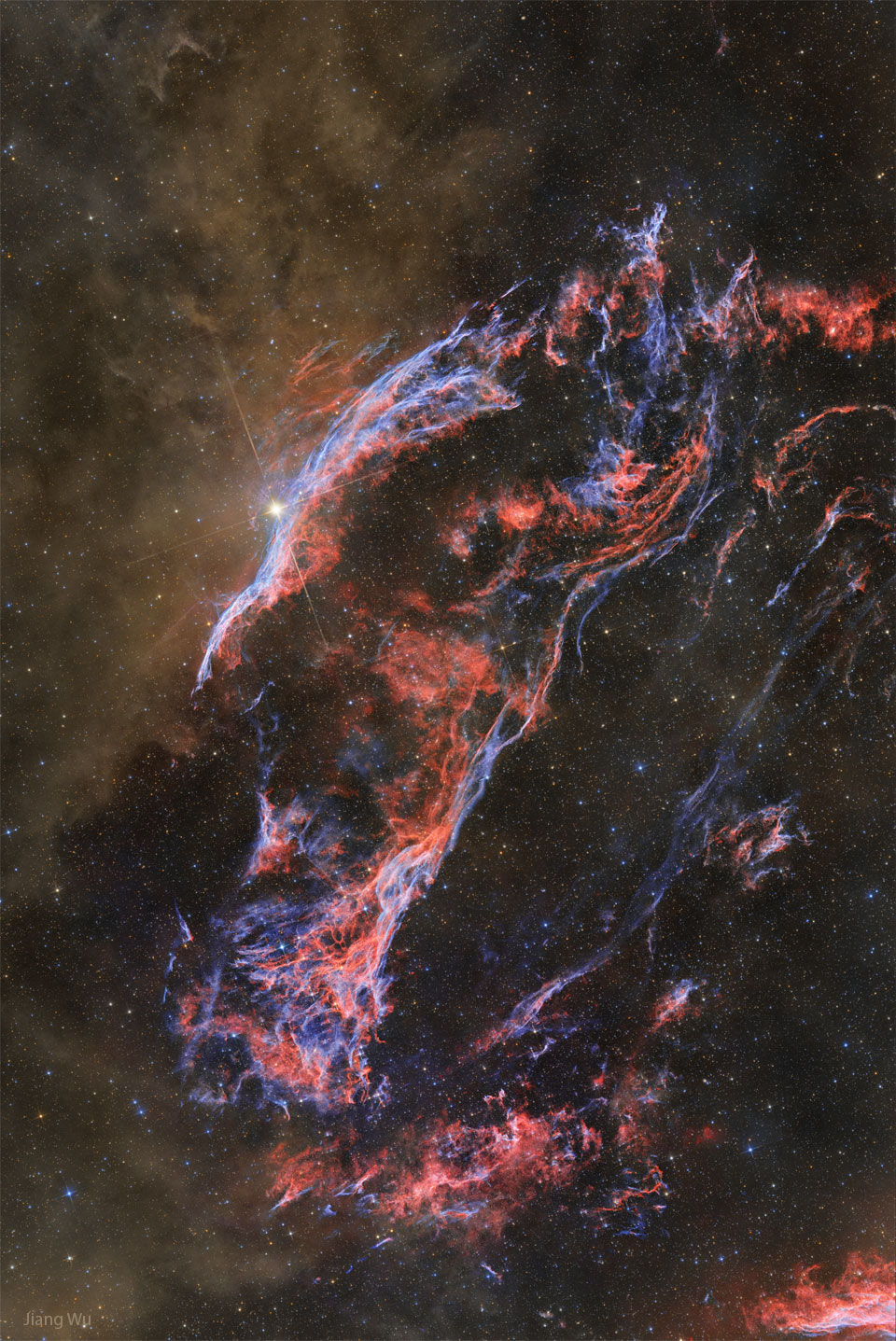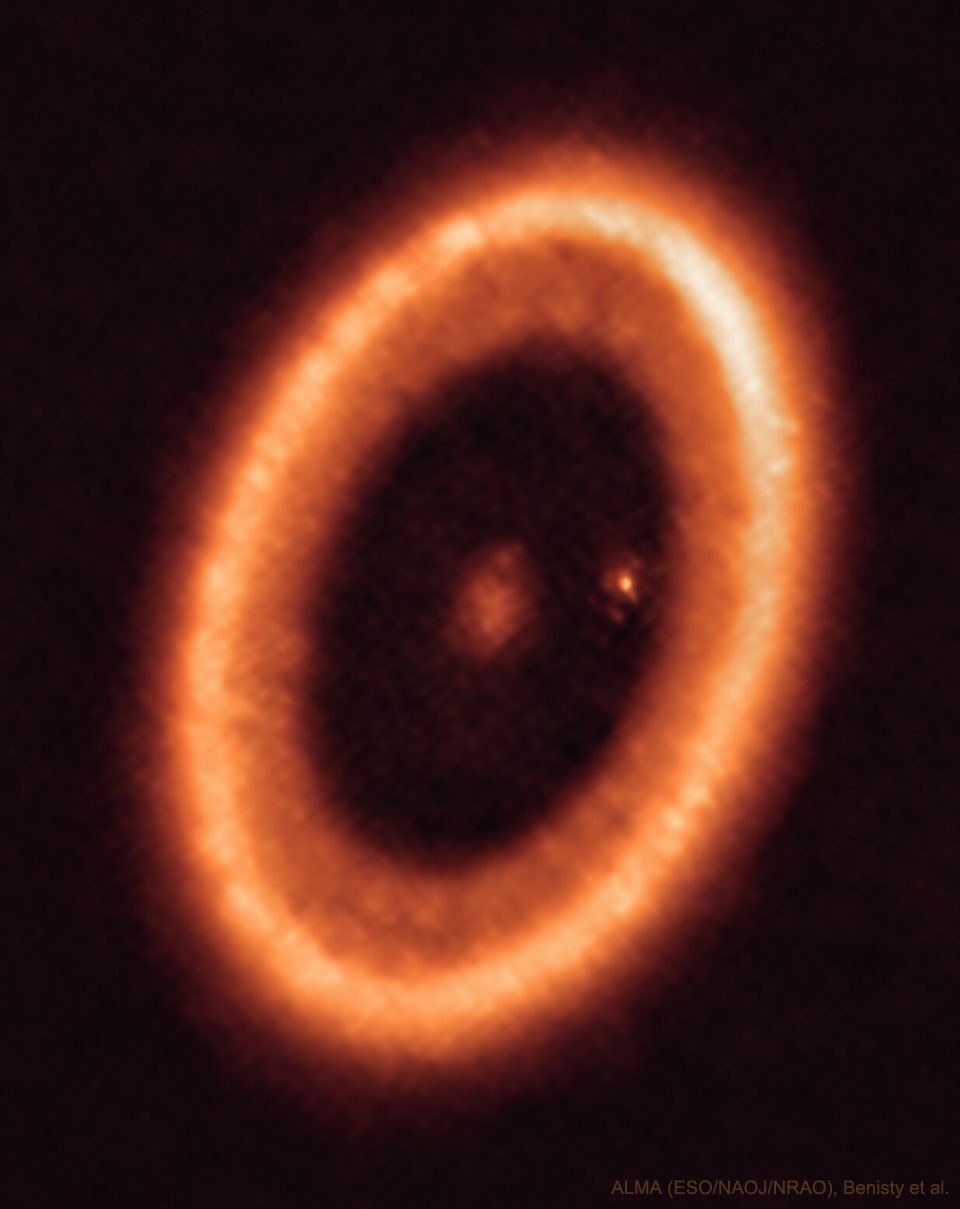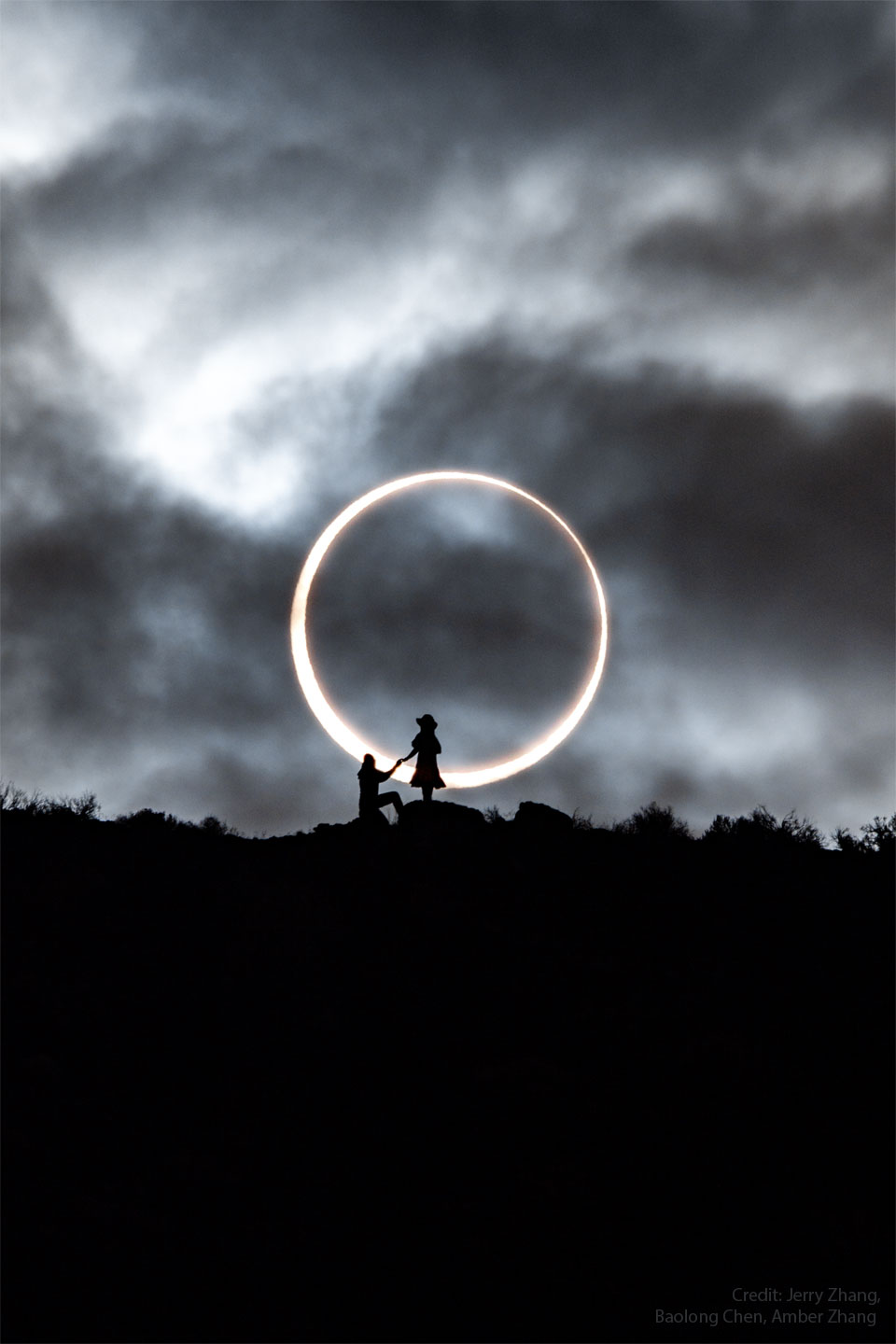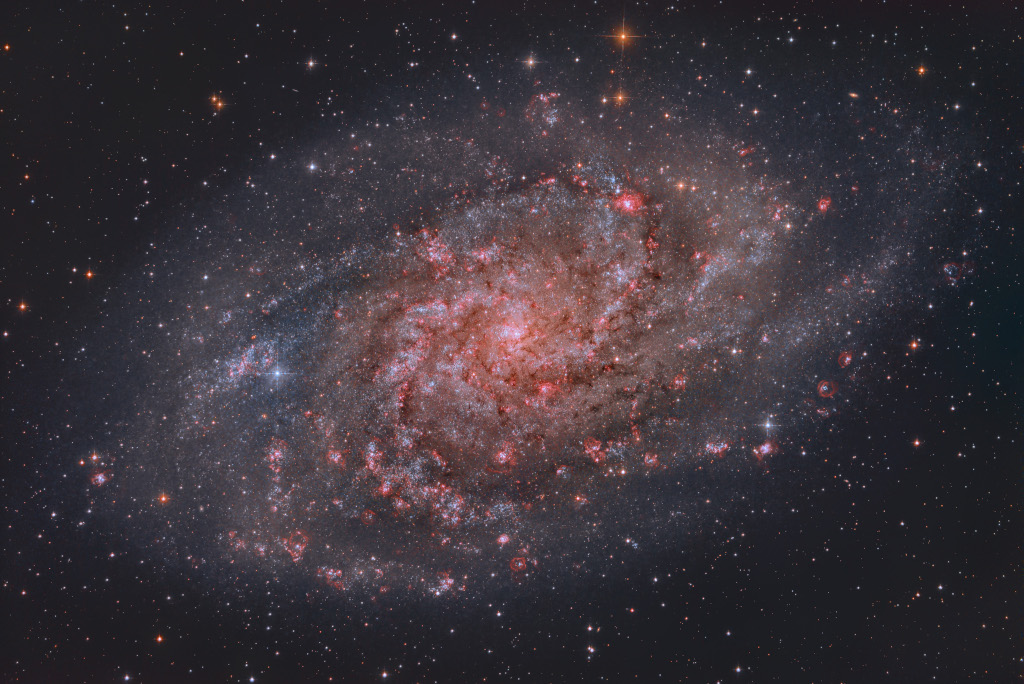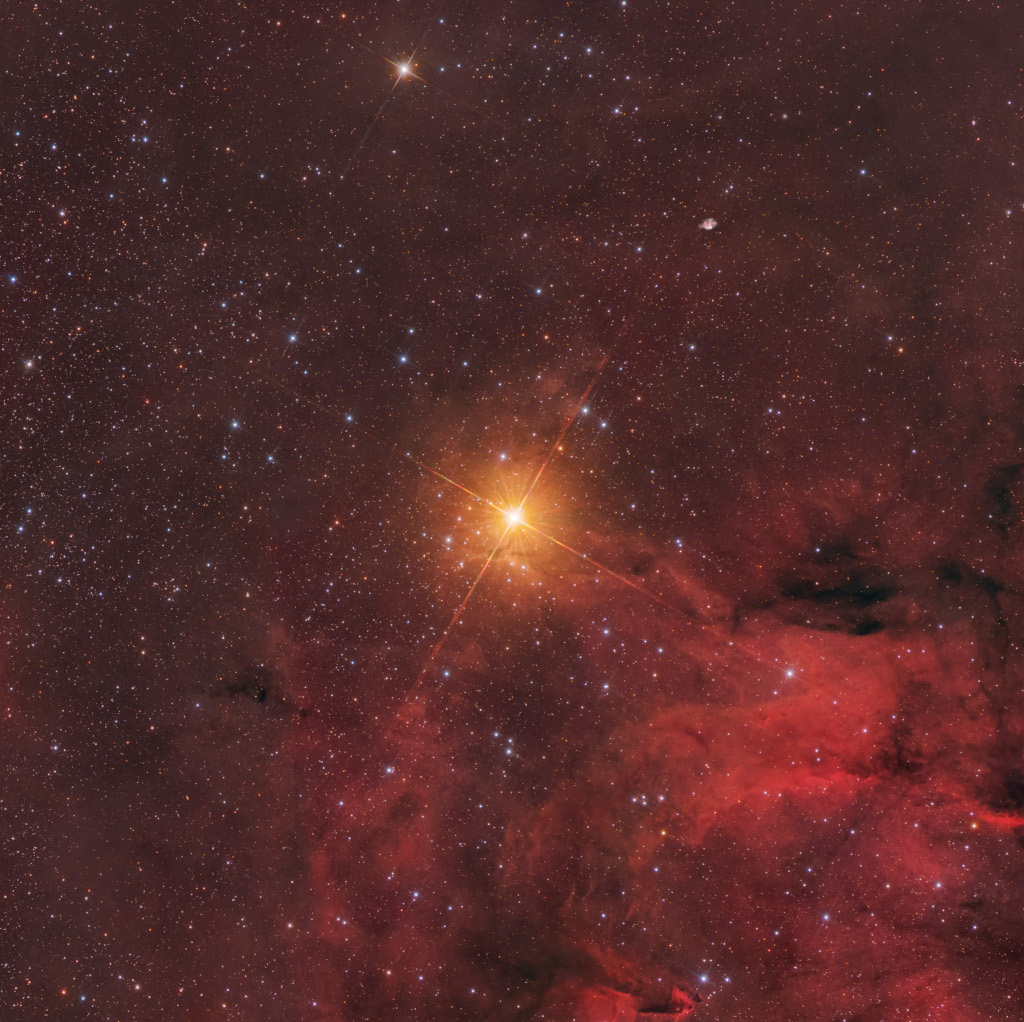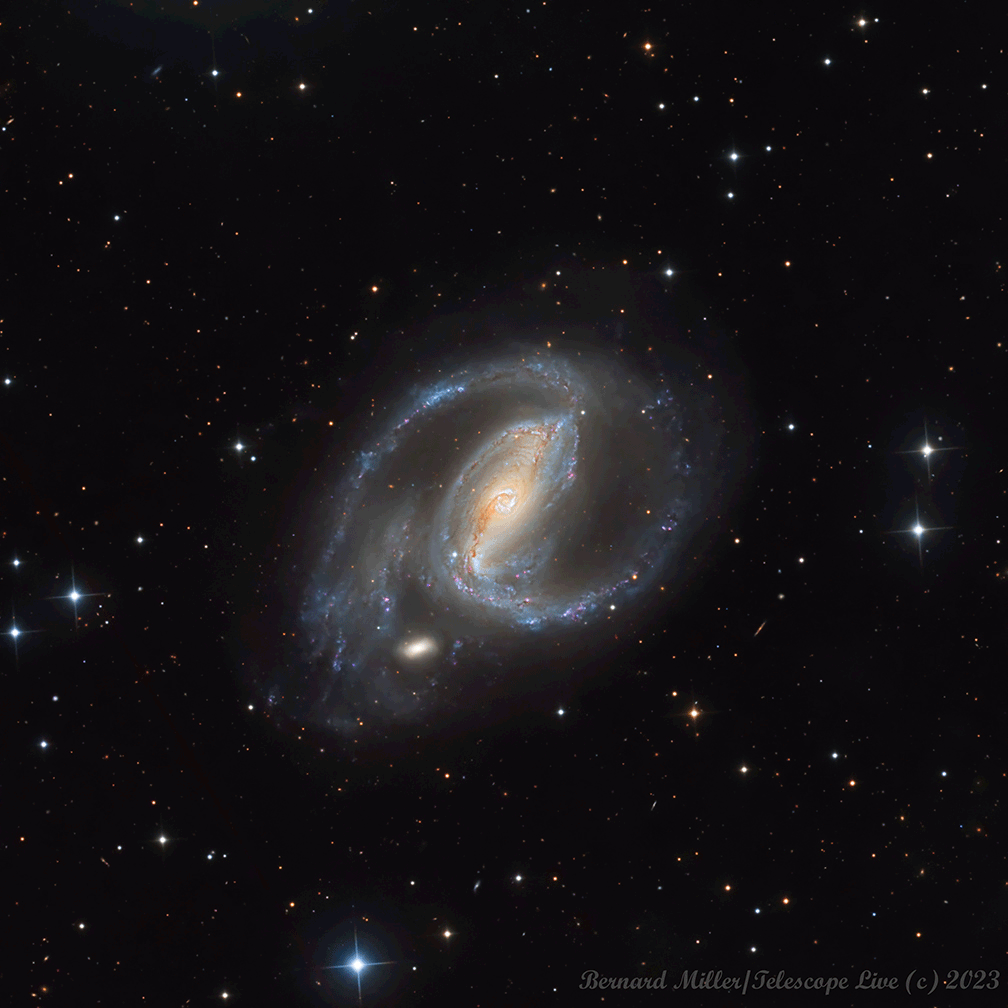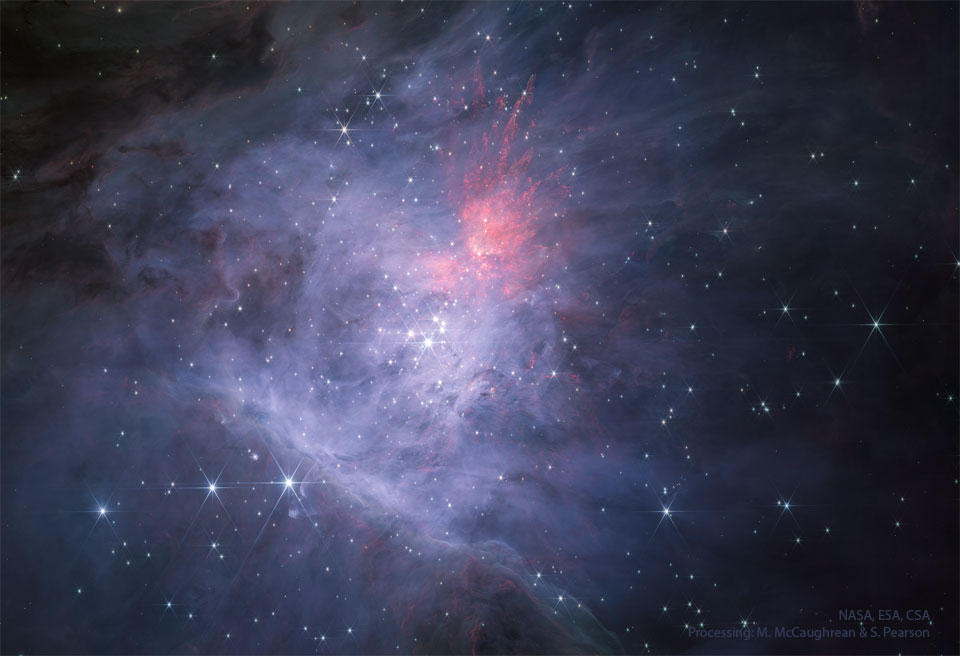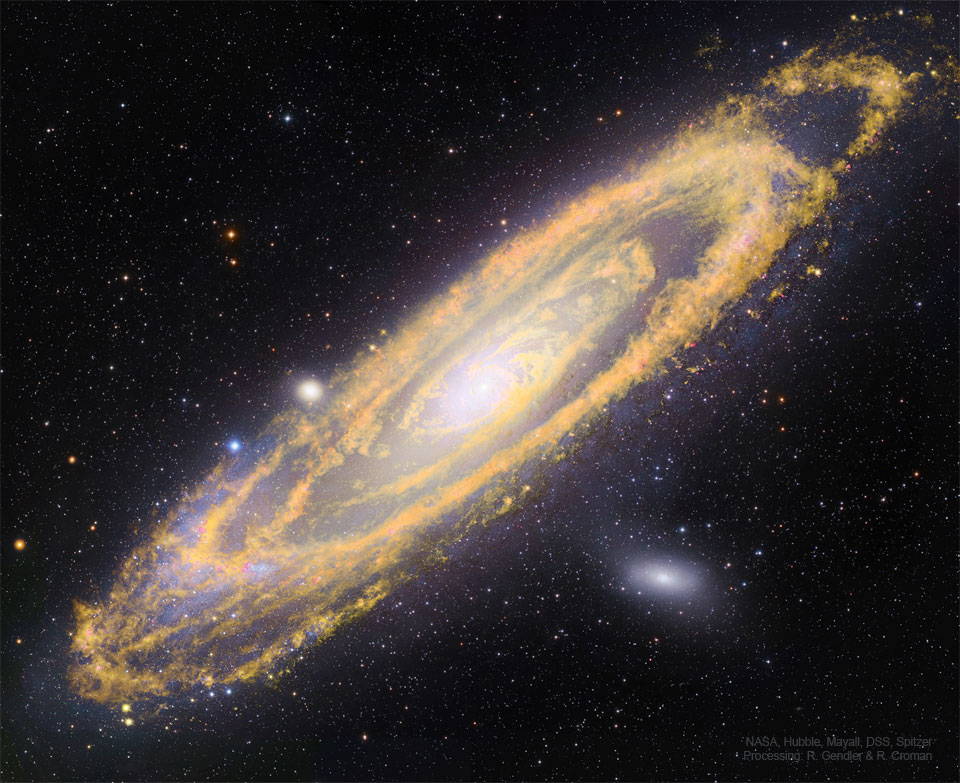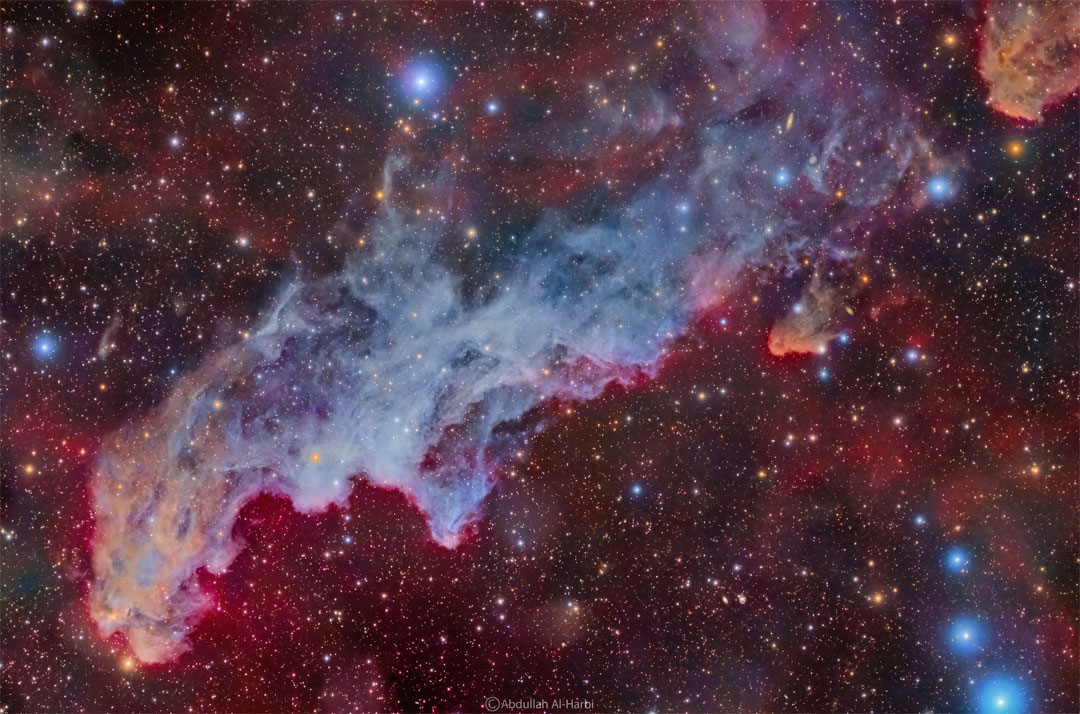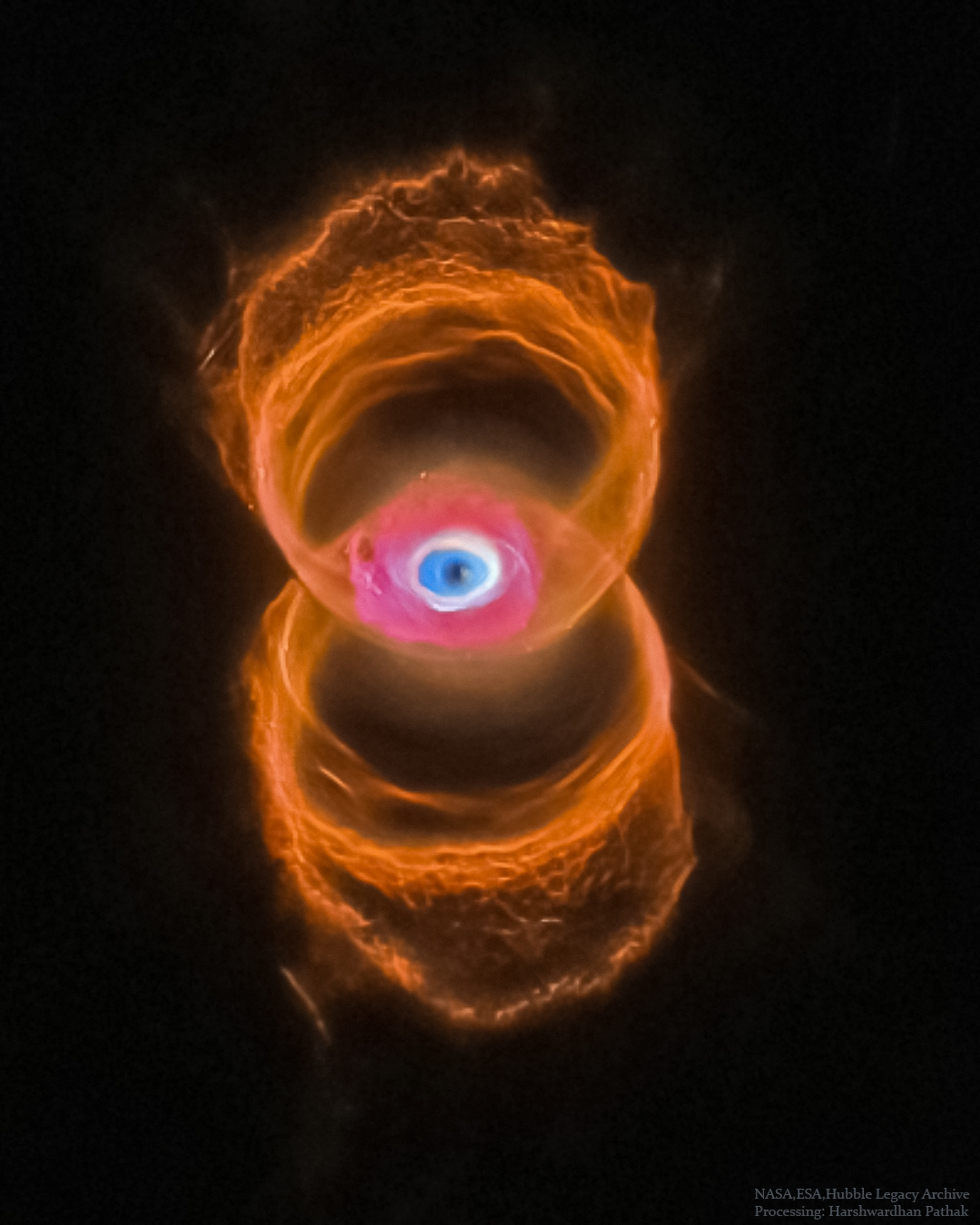
Part of the Sun disappeared earlier this month, but few people were worried. The missing part, which included the center from some locations, just went behind the Moon in what is known as an annular solar eclipse. Featured here is an eclipse sequence taken as the Moon was overtaking the rising Sun in the sky. The foreground hill is Factory Butte in Utah, USA. The rays flaring out from the Sun are not real -- they result from camera aperture diffraction and are known as sunstar. The Moon is real, but it is artificially brightened to enhance its outline -- which helps the viewer better visualize the Moon's changing position during this ring-of-fire eclipse. As stunning as this eclipse sequence is, it was considered just practice by the astrophotographer. The reason? She hopes to use this experience to better photograph the total solar eclipse that will occur over North America on April 8, 2024.
https://apod.nasa.gov/apod/ap231101.html ( November 01, 2023)


